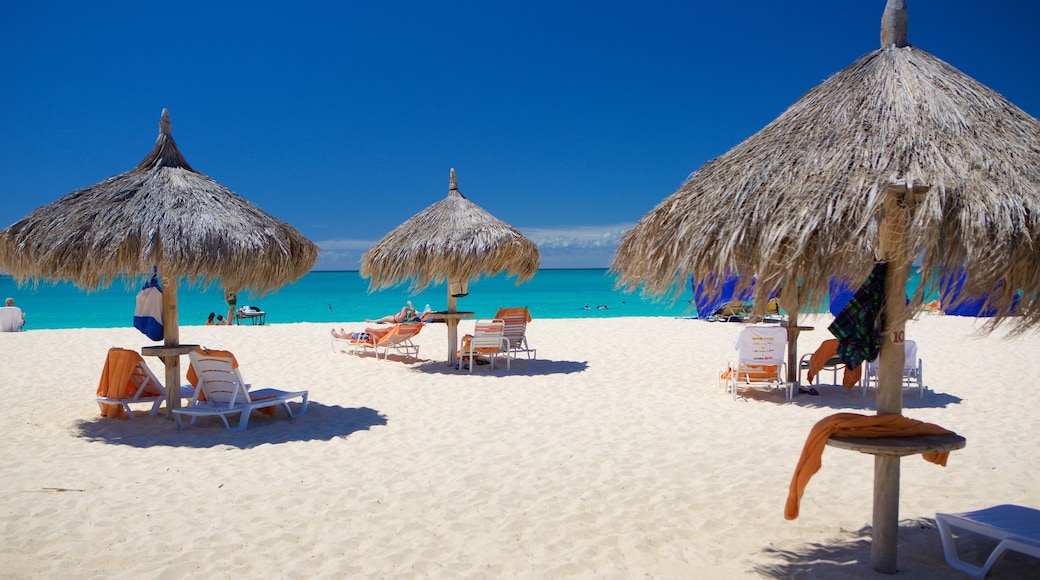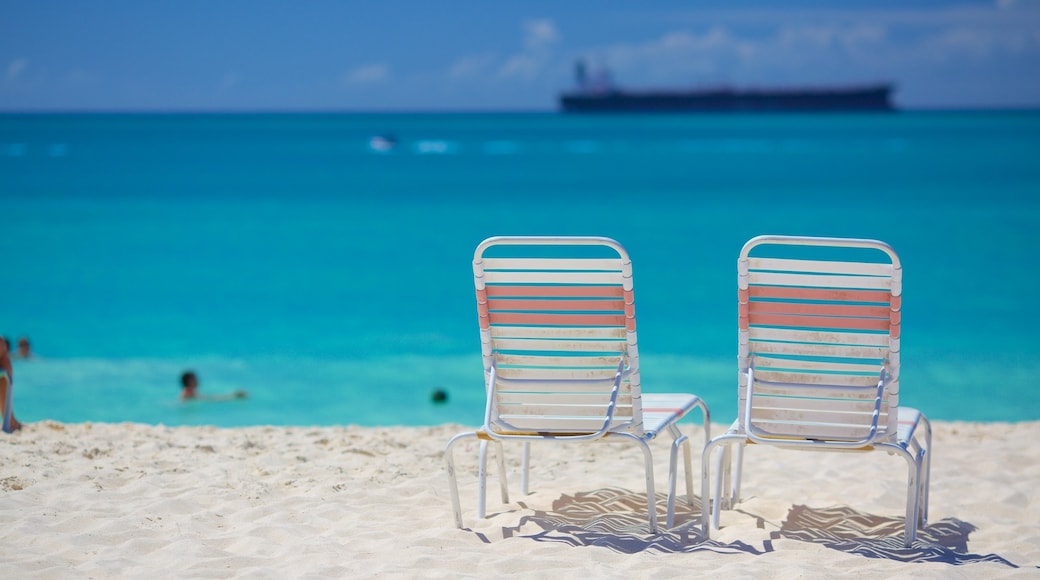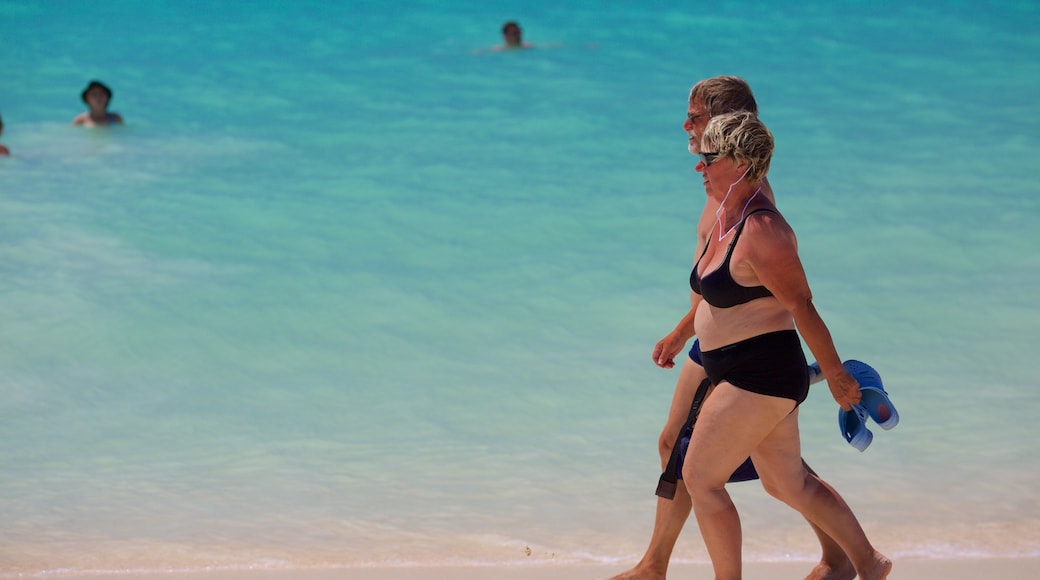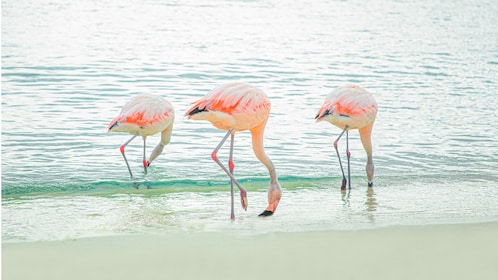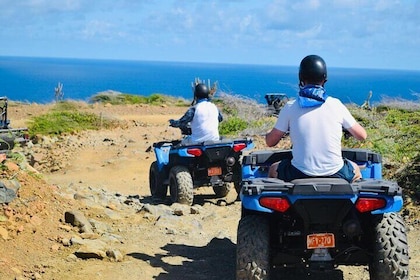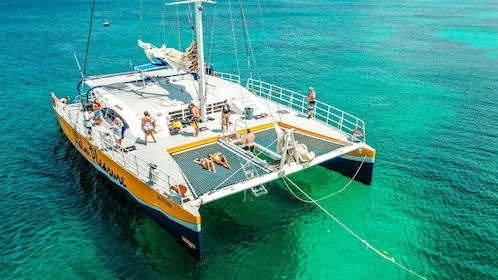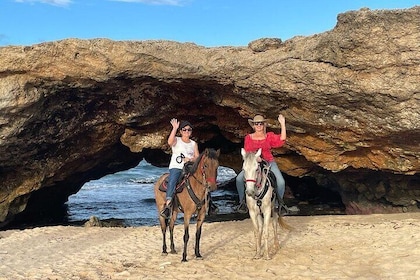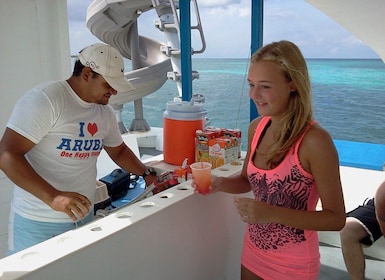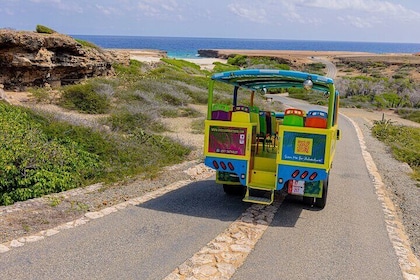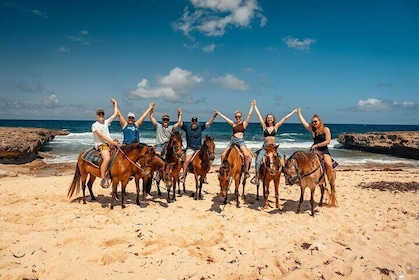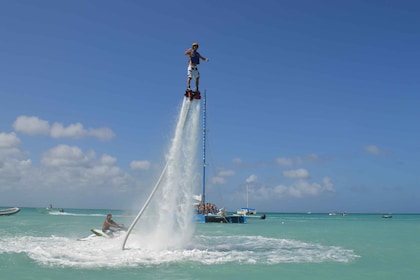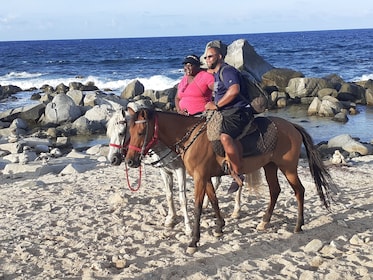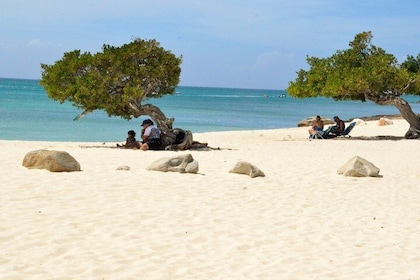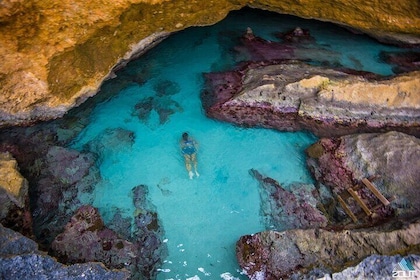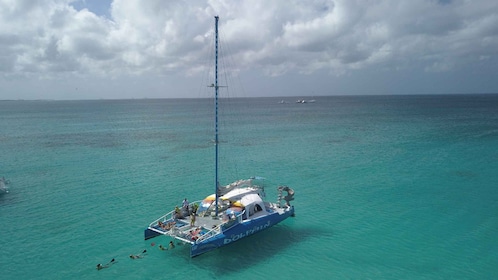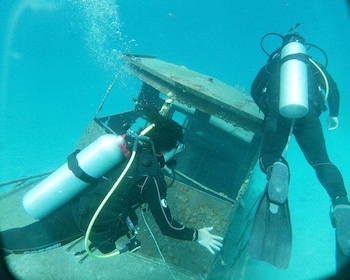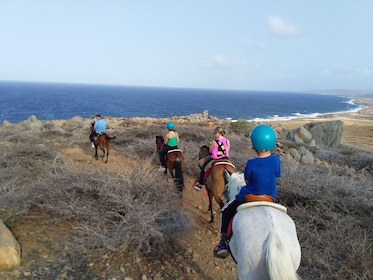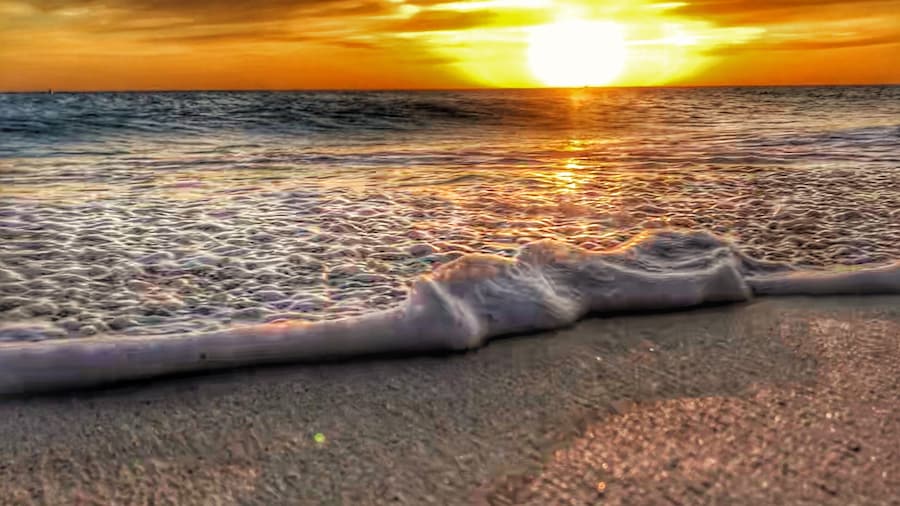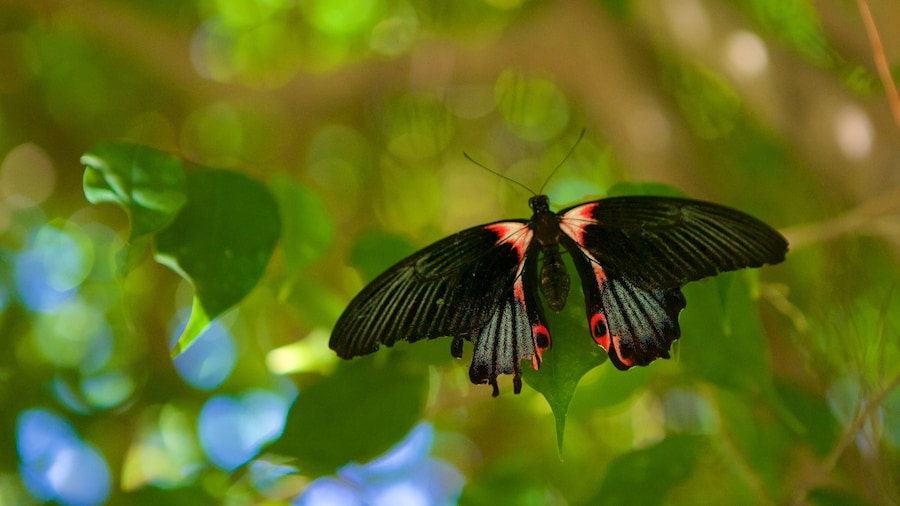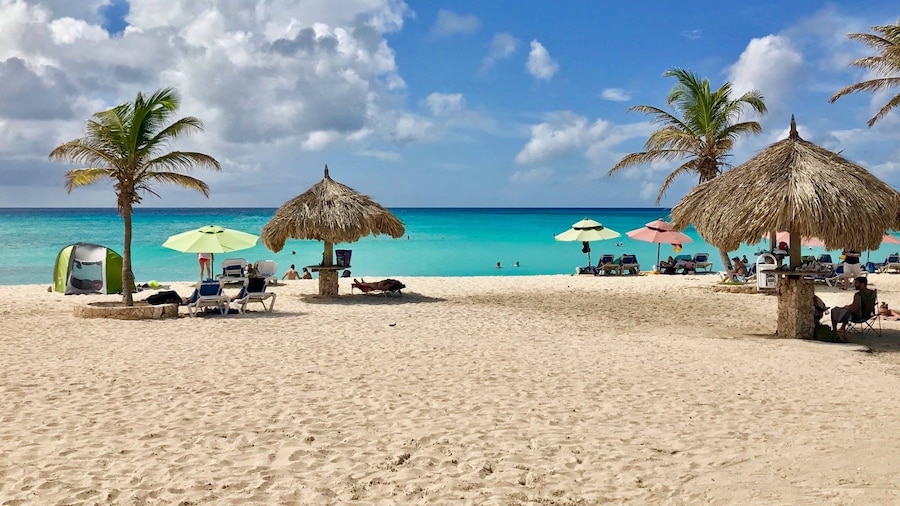Spot fish swimming in the crystal-clear waters, look for turtle nests on the shore and photograph Aruba’s famous windswept divi-divi trees.
One of the most famous stretches of sands on the island, Eagle Beach has everything you could want from a beach: typical Caribbean good looks, plenty of shaded areas, lots of practical amenities and several enticing beach bars. Besides sunning and swimming, it’s also worth seeking out the beach’s windbeaten divi-divi trees, whose image is frequently used in Aruban tourist literature.
Eagle Beach extends 1.2 miles (2 kilometers) in length and boasts wide stretches of white sands. Stay at one of the luxury resorts on the beach and you’ll be provided with sun loungers or perhaps even a thatched hut or cabana for shade. Otherwise, bring a towel and lay out on the sand. There are shaded picnic areas available for the public should you want a break from the sun.
Stroll barefoot along the pristine sands admiring the views of the surf. As you stroll, watch for red and white barriers protecting turtle nests on the shore. Leatherback, loggerhead, green and hawksbill turtles all nest on this beach between March and September. Stick around until sunset and you might even get the chance to see a hatchling embarking on the difficult journey from the nest to the ocean.
Dip your feet into the clear waters and look for schools of fish swarming around your ankles. To see more neon-colored fish and reefs in a kaleidoscope of hues, sign up for scuba diving excursions with a local operator. After you’ve had your fill of sun and sea, call into one of the low-rise hotels on the beach’s edge for a cooling refreshment.
Don’t miss the divi-divi trees found on the beach. These often photographed trees are gnarled and twisted from the island’s prevailing trade winds and lean dramatically toward the sea. You may have already seen them as they often appear in tourism marketing campaigns for the island.
Eagle Beach is located about a 15-minute drive north of Oranjestad and there is parking available. Ride there in a taxi or use local buses.
